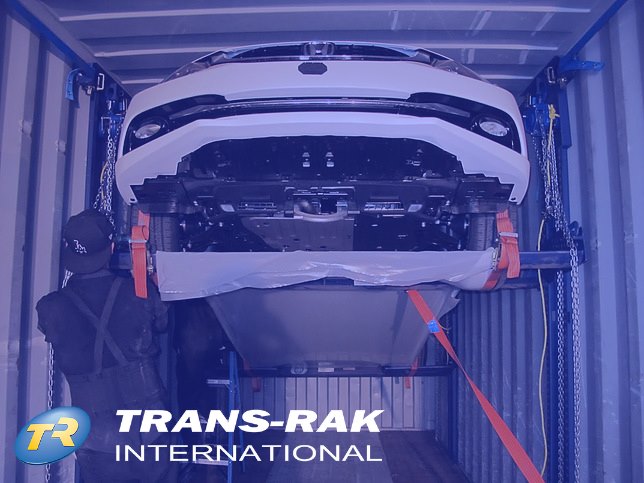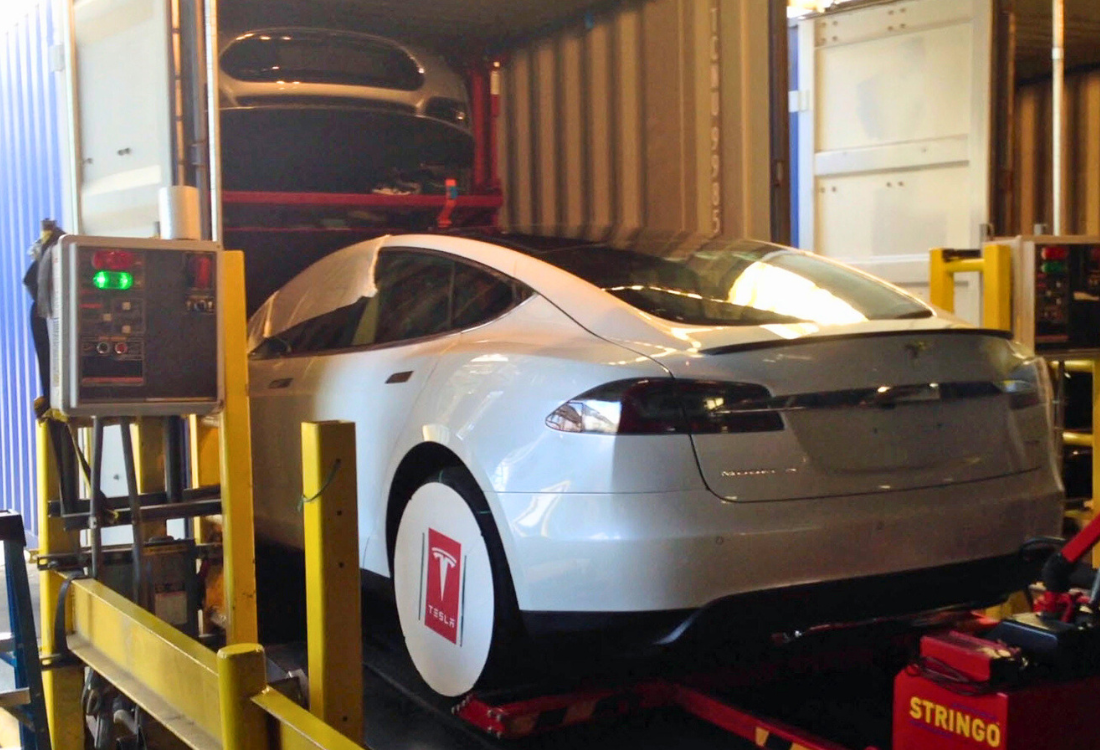
At Trans-Rak, we are the global market leaders for car racking systems, produced in association with our Chinese manufacturing partner Singamas. Our goal as a business is to make international car transport quicker, safer and more affordable. In this article we would like to get back to basics and describe what we mean by a car racking system, what the alternatives are and how our products differ from other car racking solutions.
Car Container Shipping & RoRo
Car racking is only a consideration for businesses that use shipping containers to transport their vehicles. At the moment the majority of transport companies don’t do this, although the business is changing quite rapidly. The industry standard for car transport is Roll On Roll Off, or RoRo shipping. Using RoRo, vehicles are physically driven onto a purpose designed transport ship, then driven off again. For onward transport, the car will need to be driven again onto a transporter truck, or onto a train, and so on. This is a cheap way of transporting cars, but it exposes each vehicle to the risk of damage while it is being manoeuvred on and off ship. There is also the latent risk of theft, vandalism, loss or weather damage.
Cars in containers are insulated from all these risks, which is why some businesses prefer this type of transport. The problem is that, on its own, a shipping container can only contain two standard sized vehicles, leaving a lot of wasted space above and around the cars. This is normally not sufficient to justify the expense of a shipping container.
Lowering The Cost Of Container Shipping
Hence the need for commercial car racking systems when transporting by container. Racking is a broad category. It can refer to any construct that allows you to transport additional cars within a shipping container. So instead of containing just two cars, you could install car racking to boost your container capacity to three, four or even six cars, depending on the make and model. Doing so gives you all the safety benefits of container transport while reducing the number of shipping containers you need to use – hence lower transport costs per unit.
Temporary Wooden Racking
The most commonly used car racking solution is temporary wooden racking, often referred to as ‘wood and string’ racking. This expression perhaps over emphasises the flimsy nature of this temporary racking, but it isn’t too much of an exaggeration.
Wooden racking is made on site to boost the capacity of a shipping container. It is constructed from wood, straps and rope. Well-made wooden racking is fairly secure, but if it is poorly fitted it can fail, causing significant damage to the products being stored. There is also the question of what to do with the racking when the container reaches its final destination. It isn’t usually cost-effective to ship it back home, so it ends up being burnt. This is bad for the environment and a waste of resources. The time taken to construct wooden racking and dismantle it at the other end can run into hours – increasing costs significantly.
Reusable Steel Racking (e.g. The R-Rak)
The alternative is reusable racking, which is what we specialise in at Trans-Rak. Let’s use our R-Rak product as an example. This solution uses a system of four or eight steel posts combined with wheel frames for lifted vehicles and wheel chocks for vehicles on the floor. It can be adapted to fit any size of vehicle and can double the capacity of a shipping container while providing complete security for each car. Once installed in its container and racking, the vehicle isn’t going anywhere. There is no risk of damage, theft or any other calamity befalling your shipment.
Reusable racking is a one-off purchase, as opposed to temporary racking, which needs to be made with new materials over and over again. You can use the same R-Rak on hundreds of different transports, making it an extremely cost-effective logistics tool. Even better, the R-Rak is cheap and easy to ship home. After it has been used, the racking can be collapsed down into its component parts and up to 60 of them stored within a shipping container for return transport.
Why Containerised Shipping Is the Most Cost-Effective Method Of Vehicle Logistics
Our new R-Rak racking system opens up exciting new possibilities for transporting cars around the world by ship, train or road – without ever having to move them from their container. This enormously reduces the risk of accidental or deliberate damage, thus lowering the cost of automobile logistics in absolute terms.
More information about containerised car shipping can be found in our Containerised Car Transport Guide. This free e-book explains all your options when shipping cars internationally, allowing you to compare the costs and risks of each method and make an informed choice for your business. Click here to claim your free copy today.















